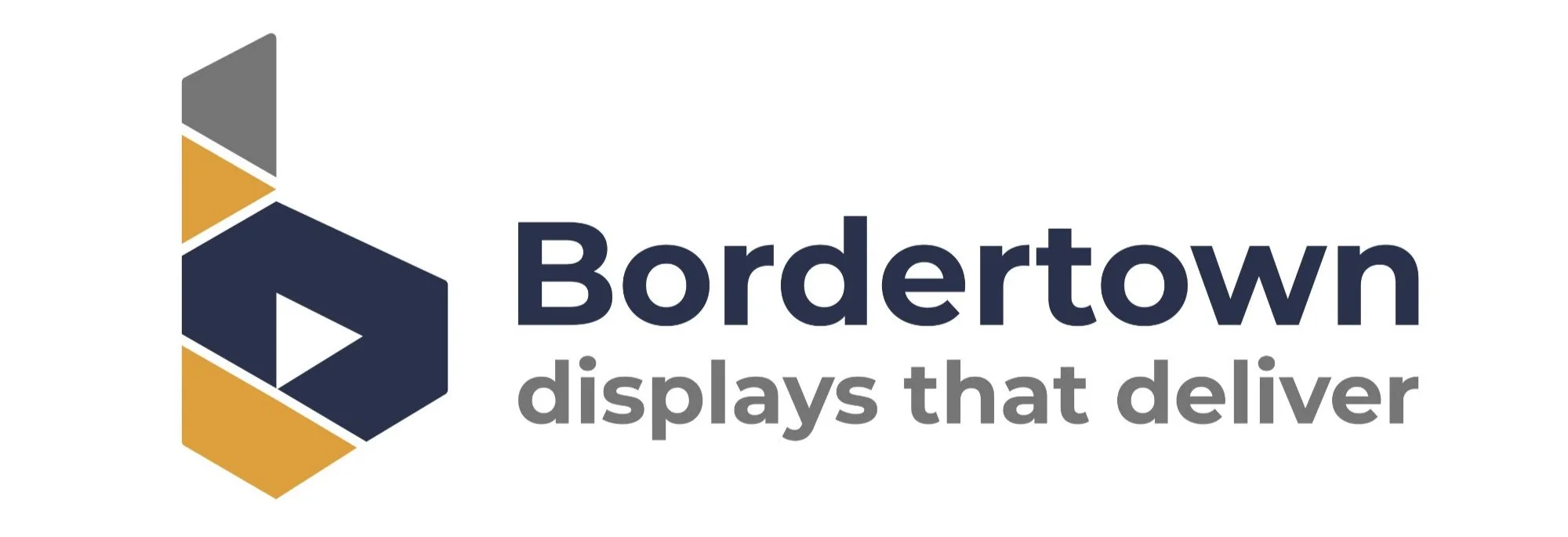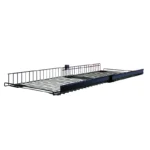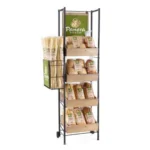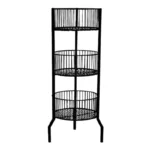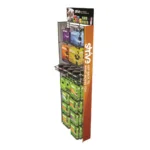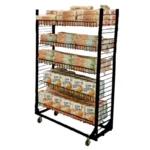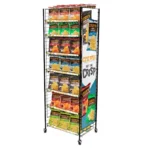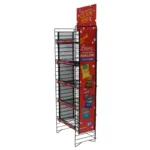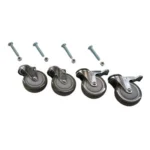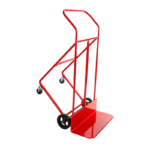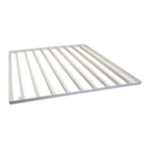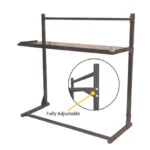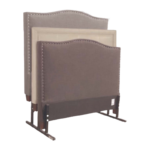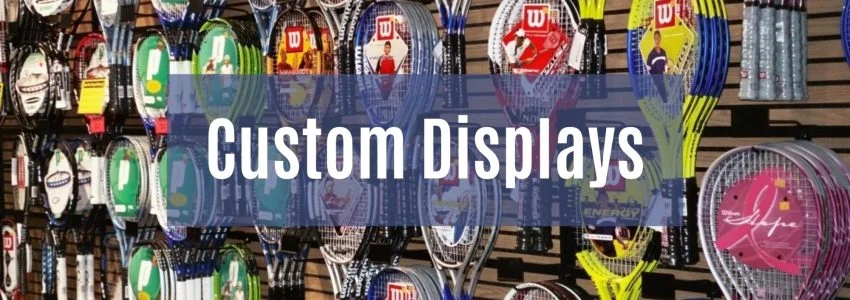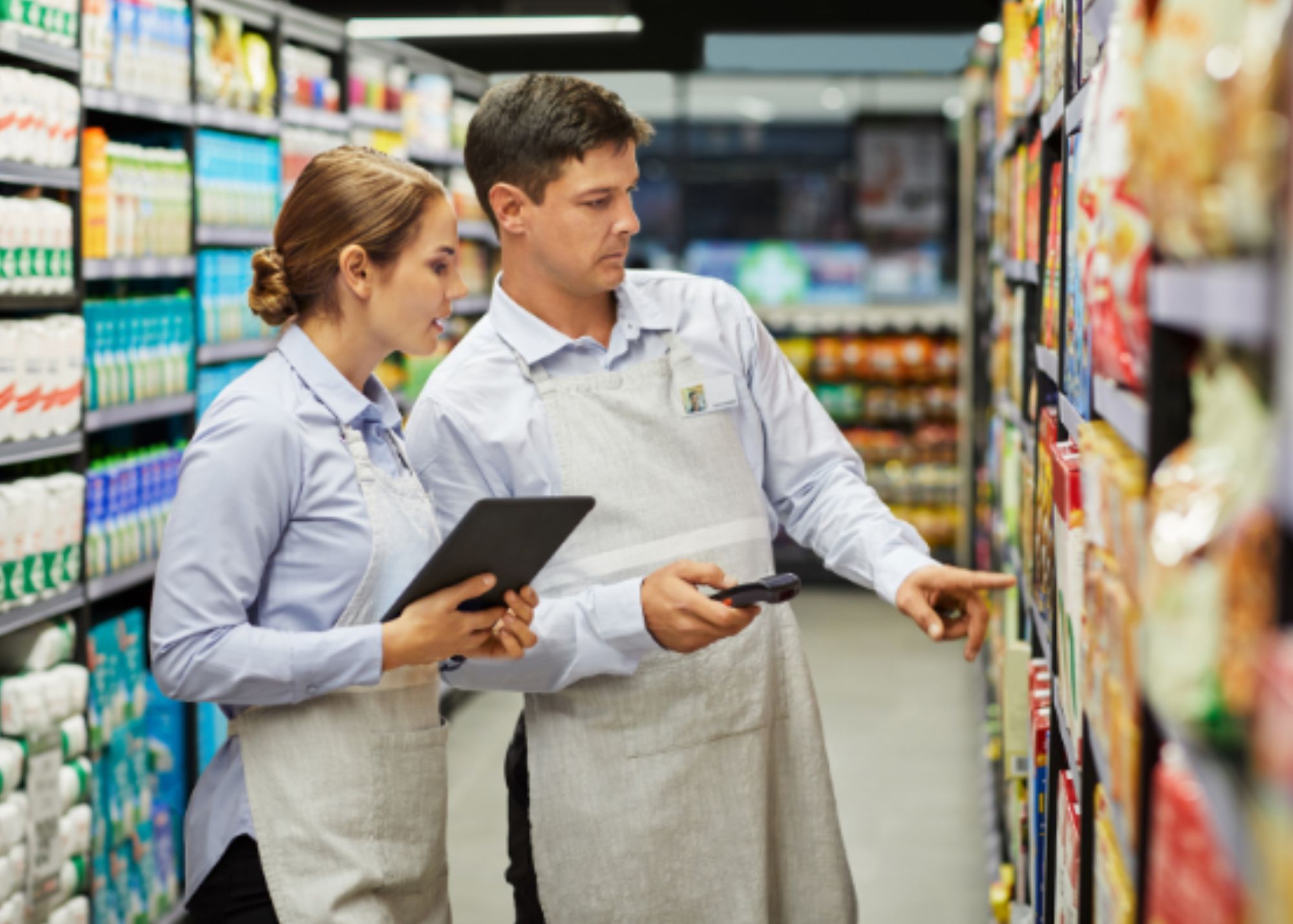The advantages of displays in retail settings are well-known: Positioning your brand for success, catching the eye of consumers, and driving impulse purchases. Displays contribute to more than 70% of purchasing decisions made at the point of sale.
All these are highly important for many distributors, brands, and private labels, but choosing between metal and cardboard can be a challenge. Both options have their own set of pros and cons that need to be considered before making a decision. Every display is different and serves a unique purpose as well.
In this article, we delve into their main points to help you make an informed choice for your specific business needs.
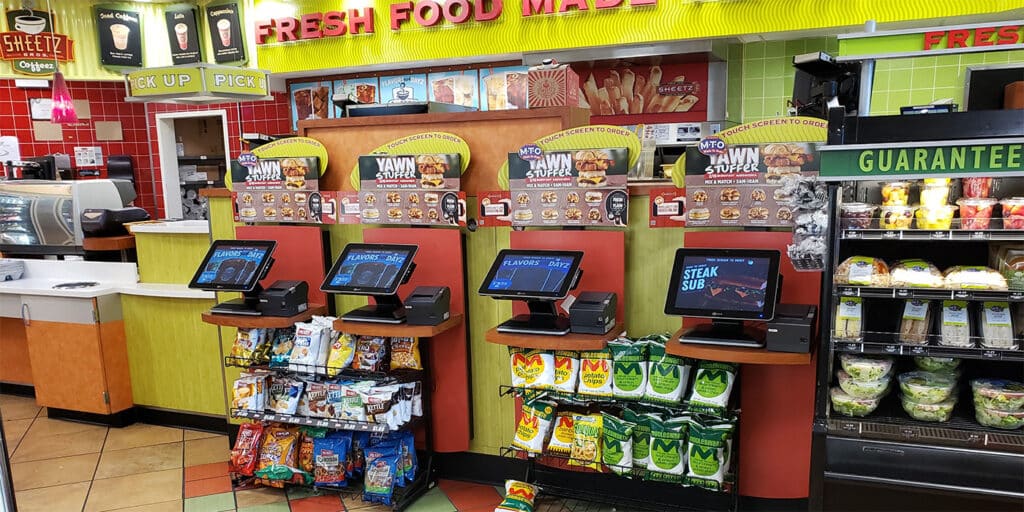
The Pros of a Metal Display
Metal displays are structures made from tubular steel, wire, or sheet metal, often finished with powder coating or plating to improve their aesthetic appeal and shield them from environmental wear and tear.
The advantages of metal displays in a retail setting include:
Built to Last
These stalwart structures offer quality, durability, and longevity that outperform their cardboard counterparts. They are crafted to endure:
- the bustling activity of foot traffic and shopping carts in retail environments
- water damage, such as continuous mopping or heavy rain
- heavier products and additional weight
Better Long-Term Investment
The resilience of metal displays translates into a wise investment for the future. Eliminating the need to replace them often gives you the advantage of additional sales at a relatively low cost.
Vivid Branding
Like a functional piece of artwork, metal displays help create that extra WOW factor, prompting an increase of 5% in customer satisfaction and 540% in sales. Their materials and construction methods allow for a range of finishes and detailed designs that catch the eye and draw in consumers. Also, they offer the flexibility of interchanging signage and products depending on the season or time of month. This is not possible with cardboard displays.
Maximize Display Space
Metal displays are often designed to make the most of any space and ensure that every inch is used efficiently. They allow a tailored fit for various product types and sizes, which is an effective solution for visibility and accessibility. Additional shelves create additional space to hold more merchandise, increasing volume and sales.
Premium Placement
The semi-permanent aspect of a metal display makes it easier to receive premium placement. The success of Wise Foods is just one example: Implementing a metal display with signage resulted in approval to place racks in 100 more locations in high-traffic areas.

The advantages of using a metal display outweigh the disadvantages, but let’s dive a little deeper into the latter.
The Cons of a Metal Display
Before deciding to build metal displays for your items, it’s essential to address the challenges associated with doing so, such as:
Longer ROI Wait
The investment in metal displays is not a weekend sprint but a few months marathon, requiring patience to see tangible returns on investment. This can be a significant consideration for brands calculating their short-term (possibly tight) budgets and marketing strategies.
Requires Separate Product Shipping
You can’t pack merchandise on a metal display before it ships. This adds layers of complexity to distribution strategies and can sometimes slow down the delivery of products. As a result, it puts more responsibility on the store staff to stock the display and make sure it is always full.
Potential Display Space Theft
Metal displays, with their robust construction and often sleek design, can attract unwanted attention. Competitor brands may appropriate these displays for their own products if store staff forget to stock the rack. This poses a risk not just to the structure itself but also to the products showcased and may require additional security measures or insurance coverage from the original owner.
Despite these cons inherent to metal displays, their visual appeal, strategic positioning, and efficient use of space can lead to substantial sales growth and more attractive long-term investment.
How do cardboard displays compare? Let’s look at their highlights and challenges.
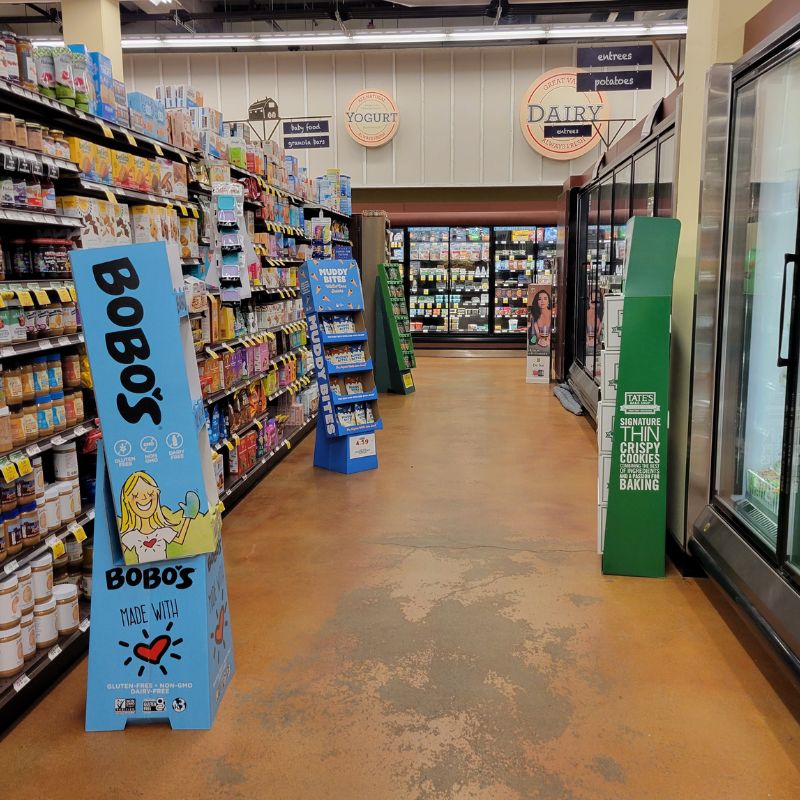
The Pros of a Cardboard Display
Cardboard displays are used not only in supermarkets and malls but also in trade shows and specialty shops. They come in various sizes, colors, and shapes, often holding cosmetics, electronics, bottled food and beverages, and toys.
These are good reasons to choose a cardboard over a metal display:
Affordable for All Brands
Made of an inexpensive material, these displays can be produced in large quantities, reducing manufacturing costs. This cost-effectiveness gives your brand a fully customized display on a small budget.
Versatile and Highly Customizable
According to Creative Displays Now, cardboard displays can be shaped to fit any product. They also come in hundreds of designs and may be placed in any part of a store based on the design. For a minimal cost, creative patterns and stickers could be printed to make a brand pop.
Environmentally Friendly
For eco-conscious brands, cardboard displays are the best option. They are typically made to be 100% recyclable and take only about three months to break down. Vegetable based ink is also a printing alternative to further reduce pollution levels.
Lightweight
The inherent agile nature of a cardboard display simplifies logistics as it can ship as fully assembled, with or without products. This rapid deployment ensures merchandise will reach the marketplace without delay. Cardboard displays also require minimal effort to move, making for easy transport throughout a store.
Quick Turnaround
Creative Displays Now says corrugated displays are easy to manufacture. This means you can implement your merchandise strategy as quickly as possible. For instance, if you need to change a design aspect before releasing it to your retailers, you can request a new version and expect a fast creation.
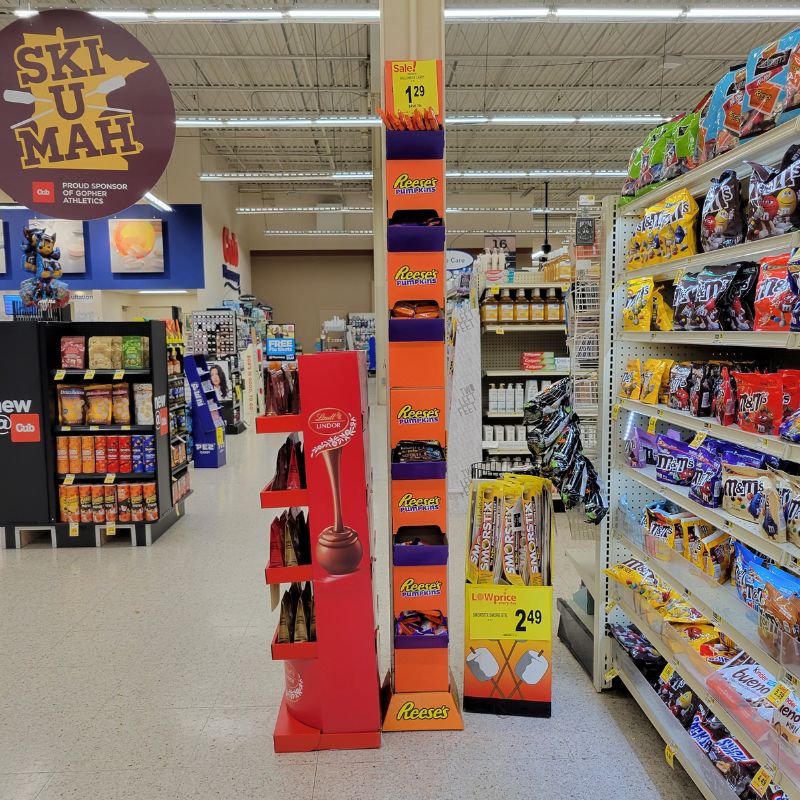
Now that we have outlined the key advantages of cardboard displays, let’s briefly look at their disadvantages.
The Cons of a Cardboard Display
If you choose this option, be prepared for the following downsides:
Prone to Wear and Tear
Cardboard displays get easily damaged in large supermarkets. Continuous foot and shopping cart traffic can quickly cause them to become worn and battered. And due to their nature of soaking up water, cleaners can inadvertently make them soggy, and the printing could appear saturated.
Shorter Life Span
Cardboard displays are typically used for temporary exhibits. After a product has sold out, store employees are likely to throw them away as there is no need to keep them. On the other hand, if you decide to use it for a longer period, you may end up with frequent replacements.
Recurring Need
Even though cardboard displays are easy and cheaper to manufacture, they don’t stand up like metal displays. This creates a cycle of replacements that not only impacts budget allocations over time but also challenges sustainable practices despite the material’s eco-friendly nature.
Wasted Shelf Space
The bottom of a cardboard display mainly functions as support, especially when it’s used for heavier products. This translates to less merchandise space and, naturally, lower sales.
Choosing the Right Display for Your Brand
About 90% of companies see a 50% increase in sales after purchasing a display, whether it is cardboard or metal.
Selecting the ideal display medium is a strategic choice that depends on your immediate business objectives and long-term vision.
Metal displays cater to those willing to face the logistical complexities for the sake of enhanced branding and product placement.
Conversely, cardboard displays are a pragmatic solution for brands prioritizing flexibility, cost efficiency, and a rapid go-to-market strategy.
Deciding between the two involves a careful assessment of your marketing strategies, budgetary constraints, and sustainability goals. By prioritizing the factors most critical to your brand’s success, you can choose the one that meets your current requirements and positions it for future growth.
